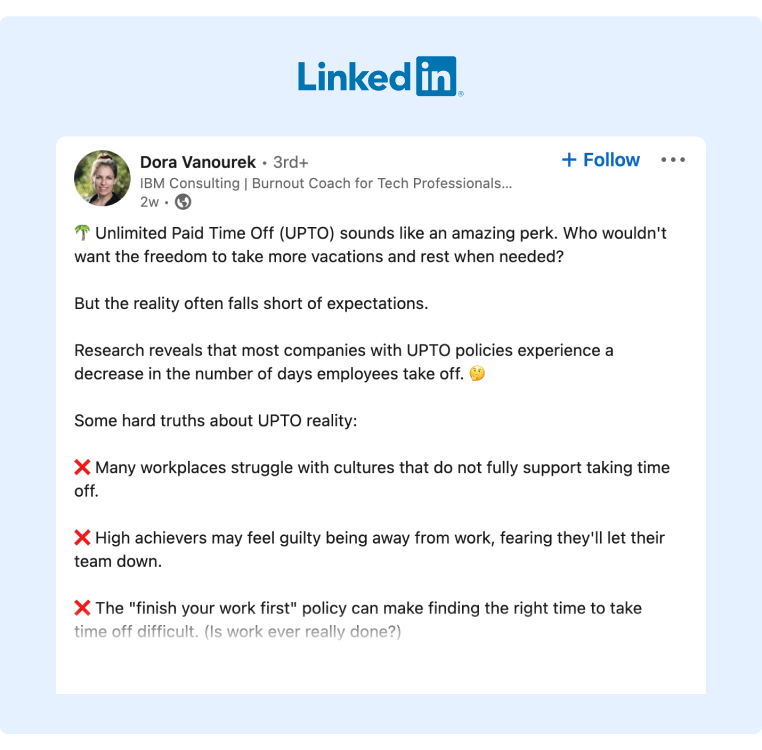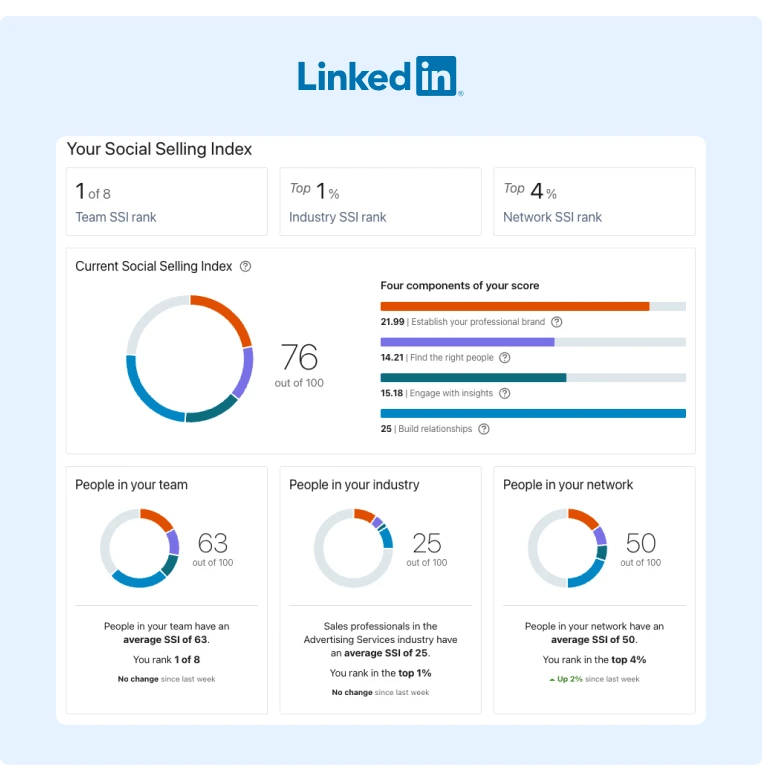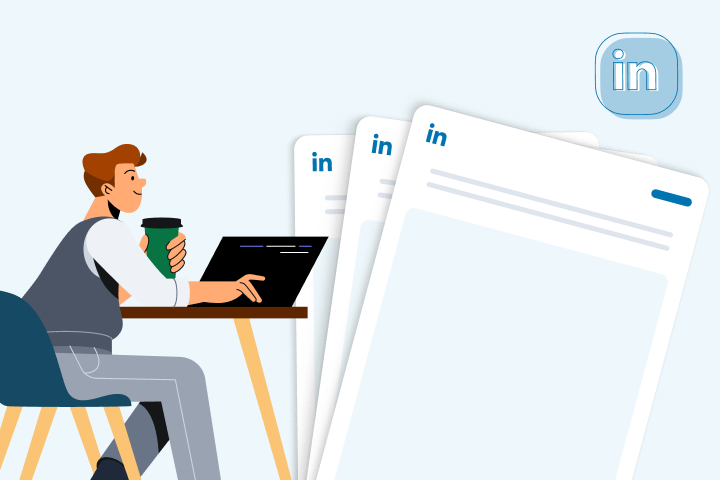How To Sell on Social Media: A Guide to Social Selling Success
Brands know in order to be successful on social media, they need to have a strong social media marketing strategy. Brands need to post with intention, providing relevant content (at the right time) for their target audience. Many brands have learned the hard way that throwing spaghetti at the proverbial wall (or news feed) isn’t going to magically boost their brand awareness and engagement, and especially not their sales.
The same concept applies to social selling. A brand can’t post a product or service and expect their audience to purchase immediately. Knowing how to sell on social media is also key to a brand’s success.
To help you bolster your brand’s social selling efforts, we’re giving you a comprehensive guide on how to sell on social media. We’re explaining what is social selling in marketing, sharing the benefits of social selling along with examples, and providing some social selling best practices that you can implement for your brand.
Let’s get started with a brief overview of what is social selling.
What Is Social Selling?
Social selling in marketing is the strategic use of social media platforms to target, connect, and engage with potential customers. A social seller or salesperson uses messaging, commenting, and sharing content to build relationships with prospects and nurture them through the buyer’s journey.
Knowing how to sell on social media is crucial for both businesses and entrepreneurs who are seeking to increase brand awareness and looking to generate income through these platforms. With the rise of ecommerce and digital-first consumer behavior, social selling represents a powerful way for them to tap into relevant online audiences.
What Are the Benefits of Social Selling?
There are advantages and disadvantages to social selling. Let’s explore the advantages first.
The advantages of social selling in business include increased brand visibility, improved customer relationships, and more effective lead generation. As brands cultivate meaningful connections with their followers through content sharing and interaction, they simultaneously raise brand awareness with a larger audience. This exposure translates into potentially more leads and ultimately higher revenue.
However, there are some disadvantages of social selling that businesses should keep in mind, too. Time commitment is a significant factor as managing various social media accounts can be demanding and require constant monitoring to ensure engagement remains active and profitable.
Relying solely on these social platforms for sales efforts can also put companies at risk in the event that algorithms change or access to users becomes limited (e.g., your brand’s social account is hacked). Despite these potential drawbacks, using social media for selling products enables brands and organizations to tap into networks that offer valuable insights into consumer behavior patterns and preferences.
B2B Social Selling Examples
For businesses looking to strengthen their social selling strategy, looking at social selling examples can provide valuable insights into how other businesses utilize their social media platforms. You can see how they engage with their prospects, address customer pain points, and showcase thought leadership to build relationships. Then you can emulate what makes sense for your brand.
If your brand is B2B, B2B social selling examples also provide unique perspectives on how companies operating in the business-to-business sector can develop and benefit from social selling initiatives. B2B businesses often face complex buying-cycles and decision-making processes that involve multiple stakeholders. Because of this, B2B social sellers must adopt a more sophisticated approach in order to resonate with their target audience effectively.
A successful B2B social selling example could involve the use of LinkedIn's Sales Navigator tool. This platform enables businesses to identify key decision-makers within their prospective industry, monitor engagement metrics within target accounts, and share relevant content that’s specifically tailored to target audiences' distinctive needs and preferences.
B2B social selling offers numerous opportunities for businesses to engage with potential clients and drive sales through targeted, value-driven interactions. Businesses can maximize their social selling efforts by leveraging tools such as LinkedIn Sales Navigator, investing in employee advocacy programs, and creating shareable content tailored to their audience.
How To Create a Social Selling Strategy
A social selling strategy is not just about selling; it’s brands leveraging social media platforms to engage with consumers, which will increase sales. To create a strong social selling strategy, it is essential for businesses to understand the best practices and utilize various social selling strategy examples.
Here are five tips (with some examples) to create a strong social selling strategy.
1. Leverage LinkedIn To Establish Credibility
An example of a successful social selling B2B strategy is leveraging LinkedIn to establish credibility within an industry. By sharing relevant content, engaging with potential clients through comments and messages, and utilizing LinkedIn Groups, businesses can position themselves as thought leaders in their field. This helps by increasing brand visibility and fostering more valuable connections that may lead to new opportunities and sales.
(We’ll dive more into social selling on LinkedIn in the next section.)
2. Use X to Monitor and Engage in Conversations
Another effective method for implementing a social selling strategy is using X (formerly Twitter) to monitor conversations around specific topics or hashtags related to your industry. By joining these discussions or even initiating them, businesses can increase their reach and make meaningful connections with potential customers who are already interested in their products or services.
3. Post Relevant, High-Quality Content
Social selling tips such as consistently posting high-quality content on various platforms can also prove beneficial for a comprehensive social selling strategy. Sharing informative articles, blog posts, or videos allows companies to showcase their expertise while providing value to their audience.

4. Tailor Content to Each Social Platform
Understanding how each social platform functions and tailoring content accordingly is crucial when it comes to implementing a well-rounded social selling strategy.
For example, Instagram might be more suitable for showcasing visually appealing products or promoting behind-the-scenes insights into company culture. Conversely, Facebook could be more appropriate for sharing longer-form content like in-depth blog posts or hosting live webinars demonstrating a product's benefits.
5. Maintain a Consistent Brand Presence
Adhering to social selling best practices requires finding ways to engage with target audiences authentically and meaningfully across multiple channels. Maintaining active profiles on several platforms ensures consistent brand presence while responding to customer queries or comments demonstrates a commitment to excellent service.
What Is Social Selling on LinkedIn
Social selling on LinkedIn is the process salespeople use to connect with other LinkedIn users, build relationships, and increase sales. It is an essential component of a brand’s social selling strategy.
As the world's largest professional network, LinkedIn offers unparalleled potential for generating leads and building relationships with clients and customers. With over 930+ million members worldwide, businesses can’t afford to ignore this powerful platform when it comes to promoting their brand(s), products, or services.
LinkedIn Social Selling Best Practices
Understanding and implementing LinkedIn social selling best practices is crucial for success on this platform. To maximize your social selling on LinkedIn, follow these four best practices:
1. Optimize Your LinkedIn Profile
To effectively engage with prospective clients and customers, businesses must first establish a strong presence on LinkedIn by optimizing their profile for search. For salespeople, their LinkedIn profile is a potential customer’s first impression. So, their profiles need to have a high-quality profile picture, banner image, basic bio information and title, a compelling About section, relevant skills/licenses/certifications, and colleague endorsements.
2. Engage With Your Target Audience
By sharing relevant articles, participating in group discussions, and engaging with other users' posts through likes and comments, businesses (and salespeople) can foster meaningful connections with their target audience.
3. Use a Content Strategy
An effective way to demonstrate thought leadership and build credibility on this platform is by providing substantive social selling LinkedIn examples. These examples can showcase how businesses have successfully used LinkedIn to generate leads, drive sales, or improve customer satisfaction. These thought leadership pieces and case studies will often feature detailed explanations of the strategies employed by the business as well as quantifiable results that demonstrate the effectiveness of certain tactics.
4. Evaluate With the Social Selling Index (SSI)
Want to know if your social selling strategy on LinkedIn is working? LinkedIn has a tool for that. LinkedIn’s Social Selling Index (SSI) is a metric provided by LinkedIn that measures how effectively users are leveraging social selling best practices.

The SSI evaluates four components: establishing a professional brand, finding the right people to connect with, engaging with insights through content sharing or commenting on others' posts, and building relationships with important decision-makers.
The Benefits of a Social Selling Platform
Social selling platforms offer a variety of features designed specifically for sales professionals. For example, Facebook has social selling tools that allow users to track engagement metrics, schedule posts across multiple networks (e.g., Facebook and Instagram), and automate follow-up tasks. These tools not only streamline the sales process but also eliminate the guesswork involved in traditional lead-generation methods.
Businesses that take advantage of these social selling service offers can equip their sales teams with quality training materials, product information, and guidelines regarding best practices to ensure a consistent brand image across all customer touchpoints. Integrating social selling tools into existing CRM systems also allows businesses to extract valuable insights about their target audience's preferences and behaviors.
Employee Advocacy for Social Selling
Adopting a robust social selling platform is no longer optional for businesses seeking long-term growth and success in today's competitive landscape. And as consumer behavior continues to evolve towards greater reliance on digital channels for brand engagement and purchasing decisions, businesses must embrace this shift and invest in social selling platforms to stay ahead of the curve.
One way to stay ahead of the curve is using employee advocacy for social selling. An employee advocacy program will allow your sales team to be more active on social media without worrying about posting the wrong thing. Consider using an employee advocacy tool like GaggleAMP to boost your social selling. Schedule a demo today!












